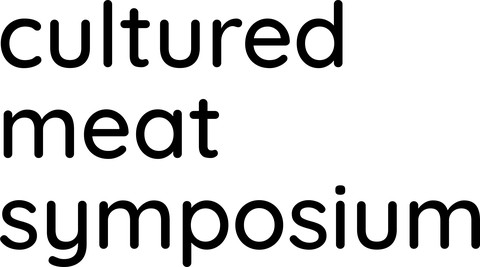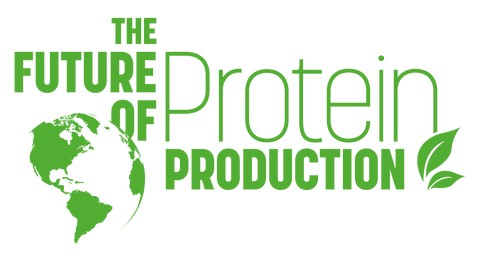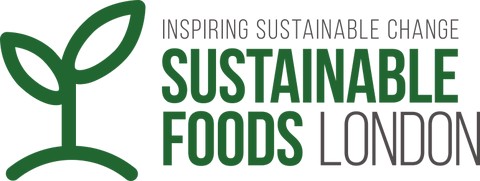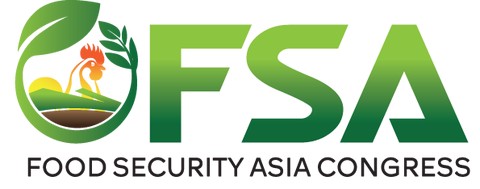Feeding Millions by the Touch of a Button
November 3, 2021 - 10 min read
This is a Student Essay Contest 2021 runner-up. Keerthana Reddy is a master’s degree student in Mechanical and Materials Engineering at University of Nebraska–Lincoln. Tasneem Bouzid, PhD student in Mechanical and Materials Engineering at University of Nebraska–Lincoln, also contributed to this essay.
In many cultures, food presents a form of love and care and a way to bring people closer. This very personal relationship we have with food differentiates us from other living organisms for whom food just serves as a source of nutrition. However, in countries that suffer from food scarcity and famines, using food as comfort is often a luxury. In such developing communities, food security means economic growth, long-term health, and comfort. Food insecurity has detrimental effects on multiple aspects of the society.
Having reliable access to safe and nutritious food is a basic human need, which is why “Zero Hunger” is listed as a second goal by the United Nations (UN) under Sustainable Development Goals Initiative [1]. According to the UN, 2.37 billion people in the world do not have access to a healthy balanced diet in 2020 [2]. The global pandemic has only worsened this situation. An estimated 12.9% of the hungry population are from developing countries (Fig. 1). Entomologists determined that the high rate of population growth relative to agricultural productivity of a country, pest attacks, low capacity to store food products, low capacity to buy food staples from other sources, and climate change were among the leading causes for increased world hunger [3].
Many international organizations like the World Food Program (WFP), one of the largest UN agencies, is helping feed millions of people around the world. Meanwhile, smaller groups like The Hunger Project work to fight poverty and hunger in Asia, Africa, and South America. The Bill and Melinda Gates Foundation works towards food fortification and provides nutritious meals to Sub-Saharan African population. Even though they work in different places around the world, these organizations are united by a common goal: to eradicate hunger and make nutritious meals accessible to everyone. Despite these organizations working to reduce hunger, the world has seen a rise in hungry people in the past year owning to climate change and the pandemic. As stated by FAO, the prevalence of undernourishment climbed to 9.9% in 2020, which is up from 8.4% one year earlier [2]. This rise is not just because of the unavailability of food, it is also largely dependent on the affordability. Making food accessible and affordable has never been more crucial.
Food assistance programs need to not only focus on food security, but also nutrition security. Poor nutritional diet is a common cause of many chronic diseases, such as diabetes and heart disease. A balanced and healthy diet includes a mixture of proteins, carbohydrates, fats, and other macronutrients. Protein intake plays an important role in the well-being of humans, especially children. Micronutrient deficiency is a commonly associated with a lack of balanced nutrition. This is seen more in developing countries than in developed nations. Increasing protein production to meet the demands of a growing population and making it available and affordable remains a challenge. This production demand is impeded by several threats ranging from deforestation and biodiversity loss to pandemics and antimicrobial resistance. Against the complexity and uncertainty of this situation, one thing remains clear: time to find a solution is running out.
Fig. 1. Representation of a hungry population around the world. Coefficient of Variation is a measure of the average meals a person consumes, the higher the variation, the higher is the population that remains hungry at a particular location [1,2,4]
The rapidly evolving science of cellular agriculture offers the possibility to solve many of the world’s protein-related dilemmas within a timeframe not otherwise on the table. However, realizing its promise will require overcoming barriers at the technical, policy, economic, and sociocultural levels. Consumer acceptance remains a major challenge in the implementation of cellular agriculture. The lack of consumer support stems from the emotions associated with the traditional methods of making food. Food neophobia is a major cause of non-acceptance of cultured meat among young adults. Increased acceptance of food largely depends on its affordability and organoleptic properties. Any new food innovation on the market needs to appeal to consumers in both ways.
To overcome the obstacle of price and increase consumer confidence in alternative methods of nutrition, my research focuses on developing meat products that meet or surpass traditional meat in cost, taste, availability, and quality. We apply engineering principles, specifically the controlling of mechanical and thermal behavior to produce innovative scaffolds. These scaffold designs are tuned to exhibit desired traits by modifying their shape and material properties. Currently, we are designing scaffolds that show negative thermal expansion to mimic the traditional behavior of shrinking meat during cooking. These polymer scaffolds are then used to manufacture ‘smart meat’. Why ‘smart’ though? Because it opens the possibility of having the right set of nutrients in a single product to fulfill dietary requirements. ‘Smart,’ because it would taste, look and feel like meat, but would be manufactured using cultured cells instead of slaughtered animals. ‘Smart,’ because we modify the materials and the contents to suit specific needs, ensuring balanced nutrition. Another way I am addressing food wastage is by ensuring that “smart meat” retains moisture for longer under heat to prevent overcooking. This is done by regulating the heat transfer in the meat product. We will study different biopolymers that can be used to culture meat and allow heat transfer within the meat to be controlled. These polymers will then be used to design scaffolds that exhibit a negative thermal expansion, i.e. they shrink when the temperature increases, just like how meat shrinks when cooked. Cultured meat that looks, feels, tastes, and cooks like regular meat is known as ‘smart meat’. The goal of this research is to make cultured meat attractive to consumers and reduce the hassle that goes into cooking a perfect piece of meat every single time. By improving consumer acceptance, the social stigma surrounding cultured meat is reduced. Increased acceptance leads to higher investments and eventually improved innovations and increased production. As demand and production increase, increased availability of cultured meat will reduce the current cost.
The second obstacle to overcome with my research is the affordability of cultured meat products. The manufacturing cost of the first ever cultured meat hamburger was $300,000 USD. Currently, the first commercially available lab-grown chicken nuggets are sold for $18 USD in Singapore by Just Eat. For someone in Australia, where the per capita income is $54,420, this price might not seem a lot, but when you look at it from the perspective of someone in Burundi, Africa earning a meager wage of $280, it is unaffordable. An efficient method of manufacturing can reduce the cost of a product significantly. To manufacture cultured meat products, we first look at the various methods of achieving the final cultured meat product. The infamous ‘Test-Tube Hamburger’ was made by combining hundreds of tiny little muscle fibers formed in a large bioreactor [5]. The muscle cells multiplied in a bioreactor to spontaneously fuse and form long fibers. This fusion allowed muscle cells to align in a directional manner like regular meat tissue. Another method of making cultured meat would be to use a foundational structure, or a scaffold, on which the muscle cells grow and align themselves. By using a scaffold, we eliminate the requirement of increasing the number of muscle cells required for spontaneous fiber formation. This spontaneity is assisted by the scaffold, where you add some muscle cells, allow them to grow, multiply and finally form the directional structure. The shape and design of the meat product can be modified by the scaffold structure. This also enables us to control the properties of the final product. Moreover, the scaffold materials can be modified to include all of the essential micronutrients to enhance muscle cell growth.
My research will aim to contribute to the overall goal of manufacturing affordable cultured meat by using cheaper alternatives for scaffold manufacturing. Traditionally, scaffolds are manufactured using extrusion, ink-jet printing, additive manufacturing, and chemical processing. These methods are time-consuming and expensive. We did an extensive survey of all available methods and additive manufacturing emerged as an economical method to fabricate scaffolds. Additive manufacturing is a fast and customizable method that is now being popularized for printing food. For the ease of accessibility, we used a commercially available benchtop printer to manufacture edible scaffolds to culture cells and grow meat tissue. The benchtop printer uses Digital Light Projection (DLP) method for printing, which uses an LED source to excite the scaffold material. The scaffold will include a light-sensitive chemical that causes the scaffold to solidify and form a rigid structure when excited. From this research, we aim to show that the manufacturing of cultured meat doesn’t require extensive lab spaces and equipment, and that it can be easy and accessible to everyone.
Fig. 2. Schematic of the proposed one-step process.
To fulfill the overarching goal of making meat at the touch of a button, we hope to bring a meat-printing machine to every household. The aim is to integrate and automate the whole process of manufacturing meat into a single tabletop machine. To elaborate, imagine an all-in-one minifridge- sized machine that includes storage, a manufacturing plant, and a processing plant. All one needs to do is pick the meat of choice and press a button. The machine will do the rest. This meatprinting machine will have an inventory of cells, scaffolds, and cell culture materials. It will then make the scaffold, seed the desired cells, and culture them in a built-in incubator. Processed material stock and the meat would remain in the incubator and the user would need regularly stock up on the raw materials just as one picks up groceries. Since all of the processes are done in a single machine, the risk of contamination is minimal.
A meat-making machine seems far-fetched in a broader view; however, it can be achieved by making science accessible to everyone. Setting up local cell banks that keep their cell lines growing and healthy, local stores that sell scaffold materials, and educating people on how to efficiently use these machines would help make cultured meat available to every household. Any improvement or changes to the machine can easily be shared with the world, removing all barriers that exist with food storage and exportation. This innovation potentially limits the demand on our existing agricultural systems to feed the growing population by offering an alternative method of balanced nutrition. With this drop-in demand, the current agricultural systems have reduced pressure to produce more food.
Food, as we know not just fills our stomach, but it fills our soul. Food is comfort, food is memory, food is culture, and food is pleasure. As humans, we are meant to enjoy every morsel we eat. However, when a large part of the population struggles to find food, enjoyment becomes a privilege. To end this disparity, many people and organizations are doing their part. Cultured meat is one innovative way for researchers and scientists to help with eliminating food inequality. Let’s aim to make science accessible, affordable, and attractive to solve the problems of food security in the modern world.
References
[1] United Nations, Sustainable Development goals [2] Food and Agricultural Organization, State of food security-nutrition [3] Zakka, Usman, and Luke C. Nwosu. “Global war on hunger and current research on the roles of world entomologists in enhancing food security.” Journal of Agricultural Science and Food Technology 5 (2019): 15-25. [4] Our World in Data, coefficient of variation in per capita caloric intake [5] Growing meat, MosaMeat ,https://mosameat.com/growing-beef


















